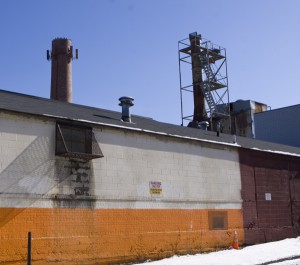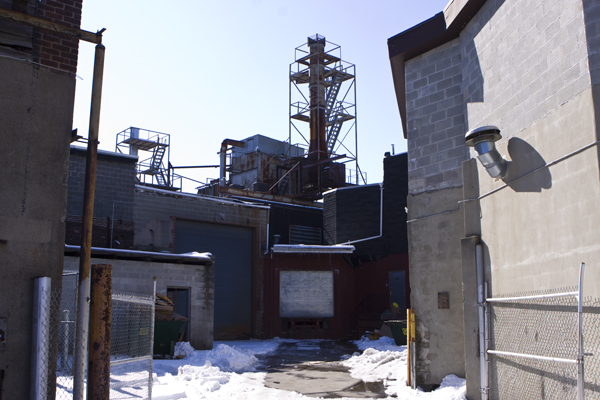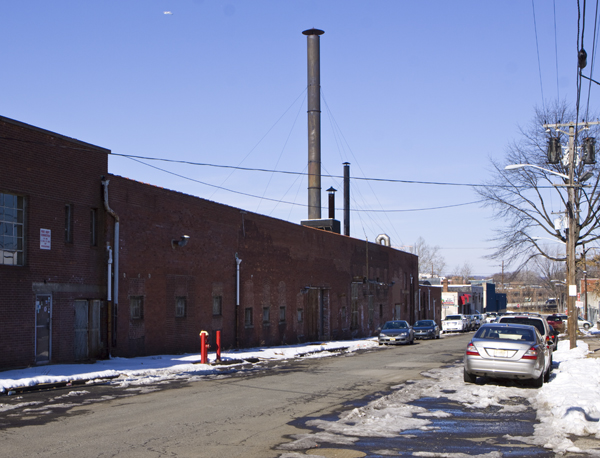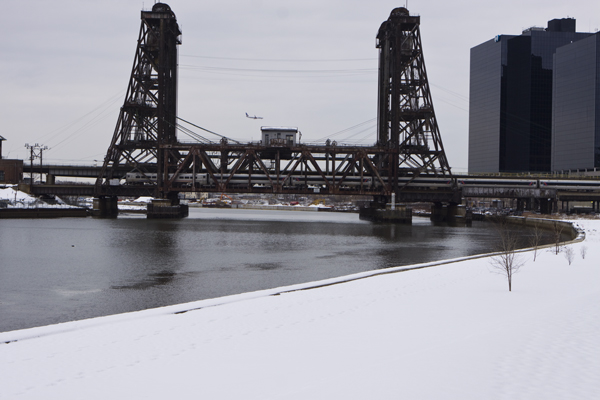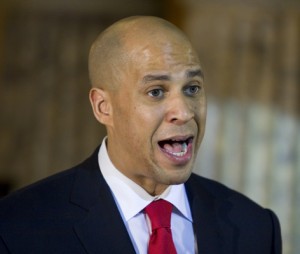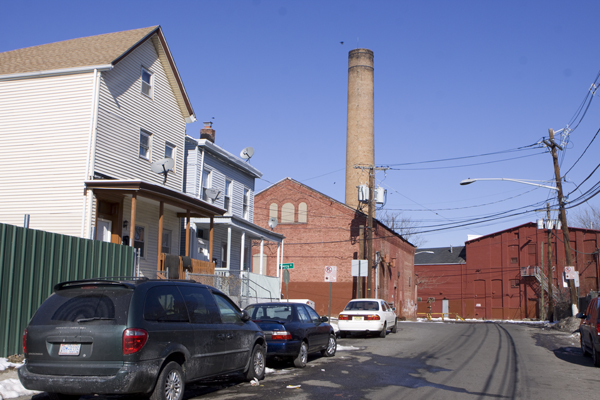[Update – 5/9/16 for this who don’t hit the links:
Dave Pringle, campaign director of the New Jersey Environmental Foundation, which endorsed Christie, was the sole representative of environmental advocacy groups on the DEP transition team. While he disagreed with the tone of the report, Pringle said it contained many ideas his group supported, including prioritizing science over political considerations. ~~~ Philadelphia Inquirer, 2/14/10 – end update]
Bloggers are often criticized as parasites on the mainstream media (some in the newspaper business even blame the internet for the demise of the industry), so I try to produce original content and generally avoid writing about or criticizing stories that run in the mainstream press.
Seeking a wider audience, instead, I try to get the stories I write and documents I disclose reported in the mainstream press. I also like to defy journalistic conventions by intentionally avoiding red meat soundbites, burying the lede, and rambling on for hundreds of words before I provide the good stuff in links at the end of the post.
But, for several important reasons, this particularly story is different. Lets break that down.
To their credit, the Philadelphia Inquirer today is the first to begin to connect the dots on the Christie environmental policy and shine some light on the arcane arena of regulatory policy. Most DEP regulations generally remain under the media radar. Previously, the Bergen Record and the Asbury Park Press reported on the Transition Report – both stories were strongly critical of Christie’s policy.
But the “in the weeds” details of regulatory policy are where the rubber meets the road in environmental protection. The process and standards for developing rules and the fine print in the rules themselves determine outcomes – and rules impact the entire state. Thus, the stakes in regulatory policy debates are huge (literally life and death (see this).
Business groups understand this and they pay big money to high powered law firms, technical experts, and lobbyists to work on regulatory issues that effect them. Christie too understands how the game is played, which explains why he made the existing rules – which already are really bad – worse by his institutional attack on DEP and structural changes to DEP regulatory policy via Executive Orders. This is why I spend most of my time working on regulatory policy issues and DEP implementation.
Given the stakes, it has always amazed and frustrated me at how few resources and little attention regulatory policies tend to get by both environmental groups and the media.
The regulatory arena demands the expertise of policy wonks and lawyers. Because rules are complex and the regulatory process is not transparent, the public is at a huge disadvantage. Thus, there is a crucial need for expert advocates to analyze rules and translate their implications to the public via media. But unfortunately, most reporters and environmental groups are ill-suited for the job and therefore tend to avoid the fine print of regulatory analysis in favor of media spin (press releases), legislative lobbying, or activism on local projects.
NJ philanthropic foundations/funders and client environmental groups like defined campaigns that tend to be local “place based” (“Stop X” “Save Y”, “Preserve Z”) or single issue focused (“Clean [Energy,Water, Air] Now!). Even those groups that work at the state level and in Trenton put first priority on legislative lobbying and media. A focus on lobbying tends to lead to certain compromises in terms of withholding criticisms in exchange for inside access. Similarly, most reporters roll their eyes when pitched a complicated regulatory story that requires investigative work. So environmentalists who depend on the media to promote their issues tend to avoid regulatory stories they know have little chance of being published because reporters and editors simply won’t write them. And the activist leaning NJ enviro groups typically narrowly focus activism and pour huge legal resources into individual development battles, projects, or sites, not the underlying regulations that govern outcomes.
Time and time again, in the wake of hugely popular legislative initiatives (e.g. Clean Water Enforcement Act, Pollution Prevention Act, Global Warming Response Act, California Car, et al) after the environmental groups declare victory and move on to the next sexy campaign, the industry lobbyists remain engaged and work behind the scenes at DEP to eviscerate legislative wins through the back door of regulatory fine print.
Invariably, when local activists get down into the details of a particular project they oppose, they find that the DEP and the program regulations are working against them and real environmental protection. Yet despite discovery of this flawed regulatory reality, not one percent those advocacy resources are investing in work on fixing the underlying regulations that effect hundreds of similar projects across the entire state.
And when DEP regulations do mange to get media attention, it is not unusual for policy issues to be spun beyond recognition, or missed entirely, or reported as “he said/she said” debates, with no attempt by the reporter to read the rules and discern fact from fiction.
I am tired of watching this train wreck repeat itself.
I have been blogging on these issues in hopes of changing these dynamics.
So I am hopeful that today’s Inquirer story will spur other media outlets, editors, and reporters to cover these issues. After all, the Bergen Record won The John B. Oakes Award for Distinguished Environmental Journalism for their “Open for Business” series on the Whitman environmental rollbacks.
I also hope to alter the currently totally unacceptable stance within the environmental community. As discussed below, lack of consensus and the political cover provided by the NJ Environmental Federation are serious impediments to playing strong defense against the Christie onslaught.
Adrienne Lu of the Inquirer reported on business and environmental group reactions to the Christie DEP Transition Report, and a series of sweeping Executive Orders. The story’s mixed headline flags the lack of consensus in the environmental community on the Christie agenda:
Kudos and caution greet Christie’s business boost – Backers cheer changes that let firms weigh in early on new rules. Some environmentalists worry
“Some environmentalists” could have been written more accurately as “all but Dave Pringle of the NJ Environmental Federation”.

Hal Bozarth, lobbyists for the NJ Chemistry Council, has been called the Godfather of toxics
Again, shockingly, Pringle/NJEF defies all his environmental colleagues and is the sole enviro on the same page in supporting Christie’s policy as the NJ chemical industry and business groups. Hal Bozarth and Dave Pringle – perfect together! Here’s how the Inquirer story tells it:
True to promise, in his first few weeks on the job, Gov. Christie has tilted the playing field in favor of business in New Jersey.
Through executive orders, he has upended the way regulations are created, giving his administration broad power to block rules it doesn’t like and allowing businesses to weigh in early in the process.
The business community is thrilled, while environmental advocates worry the economy will be used as a cover to dismantle longtime protections.
Christie is “saying that the state has to reform and redo its regulatory process so that it’s no longer a disincentive for new investment,” said Hal Bozarth, executive director of the Chemistry Council of New Jersey. “That’s frankly the first time in my long tenure that I’ve heard those things.” […]

Dave Pringle, NJ Environmental Federation. The lone supporter of Christie, he has come under harsh criticism by his colleagues.
Dave Pringle, campaign director of the New Jersey Environmental Foundation, which endorsed Christie, was the sole representative of environmental advocacy groups on the DEP transition team. While he disagreed with the tone of the report, Pringle said it contained many ideas his group supported, including prioritizing science over political considerations.
Respectfully, what we are dealing with here is far more than the “tone” of the Transition Report. And as far as I know, Pringle represented only NJEF on that Transition Team – he was NOT the representative of other advocacy groups.
And on the substance, Pringle is again dead wrong and provides more misleading spin to the press and the public.
The last time, he got caught spinning about the Transition Report and Todd Bates of the Asbury Park Press again called him out. In a February 6, 2010 story “DEP rules under review, agency’s fate uncertain” Bates reported:
But Karrow wrote and takes full responsibility for the report, according to David Pringle, a member of the panel that issued the report. He is campaign director for the New Jersey Environmental Federation, a coalition of 100 groups and 100,000 individual members.
However, Steve Wilson, a spokesman for the New Jersey Business and Industry Association, said a colleague David Brogan, vice president for environmental policy, helped write the report.
And prior to that, in a November 23 story “Eco-Lobby frets over rules freeze“, Bates caught Pringle spinning about the impact of Christie’s moratorium on environmental rules. Pringle denied that the moratorium in EO #1 would harm the environment. But directly after Pringle’s quote the APP story listed several major DEP rules it blocked.
In a November 24 post, I pointed that out that contradiction, by quoting the following text from the APP story:
David Pringle, campaign director for the New Jersey Environmental Federation, said “the state has a lot of inefficiencies and overlapping and conflicting rules, and there’s plenty of things that have absolutely no impact on environmental and public health protection.”
But flat out contradicting Pringle’s spin, the APP reports on just some of the DEP environmental rules that would be impacted (for a full list, see this post)
The Department of Environmental Protection, for example, has 18 proposed rules, including one that would cover wind turbines and solar panels in the coastal zone.
In a letter last week, Christie asked Corzine to freeze all pending regulations that would result in additional spending.
Pending DEP proposals would readopt safe drinking water and water pollution control rules; require lower-sulfur, less-polluting fuel oil; set standards for wind and solar facilities in the coastal zone; and set a limit for perchlorate, a rocket fuel chemical, in drinking water.
It is unusual for a journalist to print a quote from a source, directly followed by another source or facts that directly contradict it. This shows how low Pringle’s credibility is.
Pringle’s position in today’s Inquirer story (about prioritizing science over politics) is more discredited spin that is in direct contradiction with facts on the public record, because:
1) the process for developing rules in EO 2 requires “advance notice”. This increases the ability for industry/developers to use politics against science to kill rules.
2) Of course, the industry lobbyists also have a back door unaccountable option to kill rules based on political considerations in the Lt. Gov Regulatory Czar created under EO 1. I believe that this violates the NJ Administrative Procedures Act;
3) the legal standards in EO 2 elevate costs to at least an equal stature as science, thus undermining the science. I believe this violates underlying federal and state environmental laws that do not authorize DEP to consider costs;
4) In a Star Ledger interview, DEP Commissioner nominee Bob Martin said he supports “cost/benefit analysis“, a tool often used by industry expressly to trump science. Martin also supported industry reps on the Science Advisory Board – 3 Dupont scientists have been nominated, as well as 3 other private sector consultants – of 12. So much for objective science.
5) there is no money to improve DEP information systems
More to follow as this story develops.
[Update – I just read this and want to make one ignored point clear – this has nothing to do with an expert/top down approach versus local/grassroots organizing. The regulatory analysis, blogging, and media coverage I work on is designed to provide the ammunition to initially outrage citizens, to catalyze activism, to sustain media engagement, and then to focus and feed citizen campaigns that leads to real progress. I have successfully engaged this model many places.

